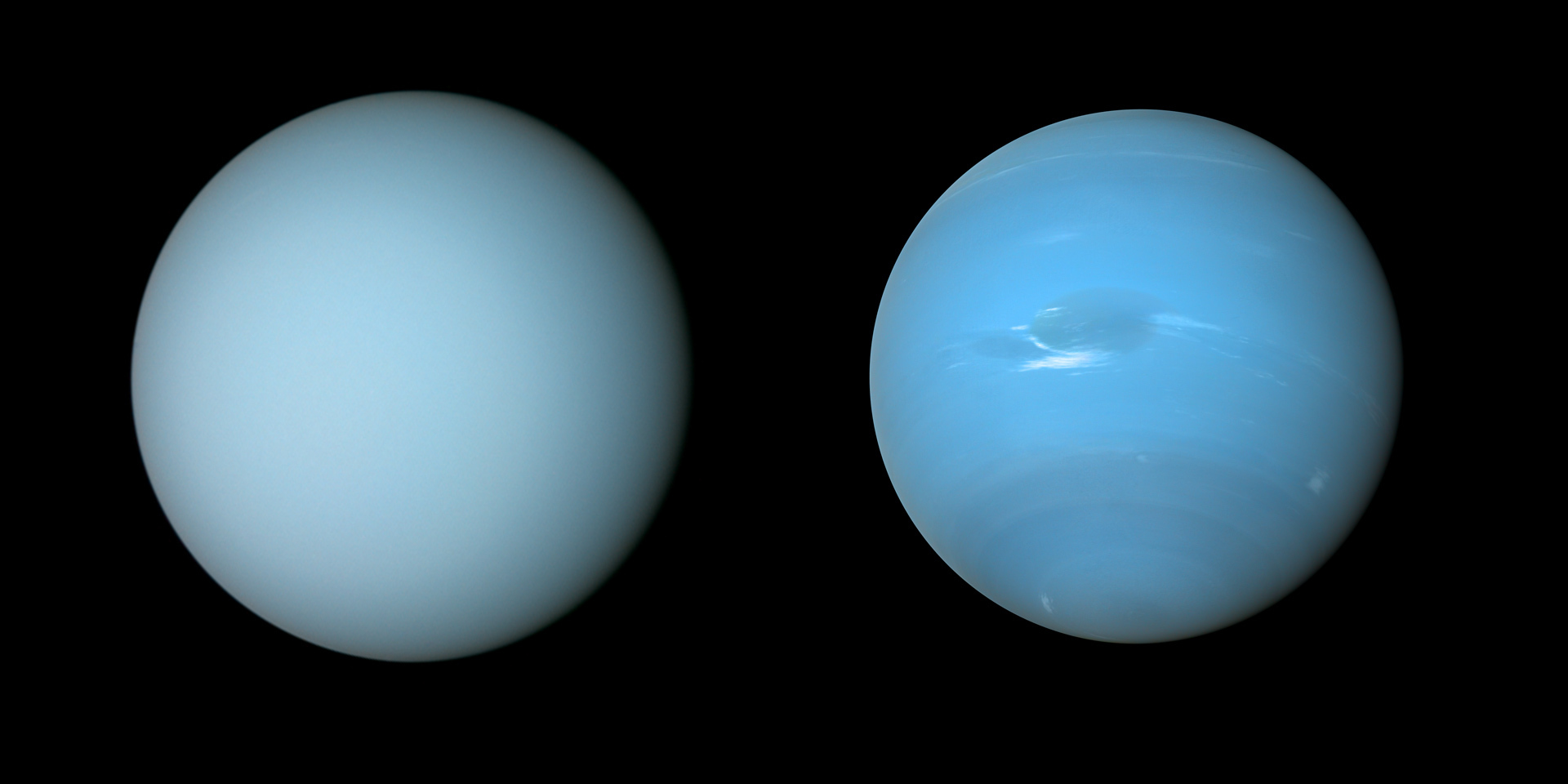Friday Night Science: Is Neptune Deep Blue?
Is Neptune Deep Blue?
Uranus and Neptune are so far out that they fall below the human eye limit. Unless, of course, you happen to have perfectly normal vision, and if you're under exceptional night skies, with zero light pollution and all that, then you might spot a tiny little star, faintly blue and not twinkling, almost lost amongst a thousand other flickering blips of distant light. That's Uranus.
If you ask an astronomer, they'll affirm that looking for Uranus, without a telescope or at least a pair of binoculars, is searching for a needle in a haystack. At 2.9 billion km or 19.8 au away from the Sun, in our night skies, Uranus shines with an average apparent magnitude of 5.68, almost close to the ultimate limit of the human eye. The odds for Neptune are even worse. Having an apparent magnitude of 7.8, Neptune exceeds our visual capacity. In astronomy, the fainter an object is, the more is its magnitude. For a quick comparison, the Sun, the brightest object in the sky, has an apparent magnitude of negative 26.7.
 |
| Enhanced color photograph of Uranus (left) and Neptune (right) captured by Voyager 2 during its closest approach to the respective planets in 1986 and 1989. While Uranus seems to be a calm world, Neptune's visible surface hints at a dynamic weather. The Great Dark Spot (on Neptune) happens to be the most violent storm in the solar system. Credit: NASA via flickr.com/photos. |
Nevertheless, you can always try them out with whatever pair of binoculars or small telescopes you may have, plus a handy astronomical chart. Understandably, in small scopes, neither of the gaseous ice giants would differ much from the background stars except that they don't twinkle. If you use a telescope, you can push the magnification to the highest and see if the pin-point of light diffuses out. If it does, then you're indeed looking at a planet. But more so, it is their color that gives away. In small amateur telescopes with less than 6-inch diameter mirrors, Uranus appears to have a blue-to-green shade. Neptune, on the other hand, spots a darker azure.
Just because you have a small telescope or a binocular doesn't mean you can't look. Bear in mind that Galileo's telescopes were a lot inferior to our modern equipment, and yet, from 1612-13, he managed to spot Neptune twice as a very odd star! After that, two thirty and more long years would pass before Neptune would be rediscovered and then not-so-discovered before it officially became the eighth planet from the Sun sometime around 1845-46.
Our views of the gaseous ice giants radically transformed when we managed to send a probe, Voyager 2, beyond the orbit of Saturn and into the local neighborhood of Uranus and Neptune. In 1986, Voyager 2 managed to fly to within 81,500 km (50,600 mi) of Uranus and made history in 1989 as it made its closest approach to Neptune at merely 4,950 km (3,075 mi) above the cloud tops.
A bigger telescope, a10-inch plus mirror, will give you better views of the two planets and some of their moons, but nothing comes closer to imagining oneself in a tiny probe, out there in space, and by the window looms a whole new world.
Astronomical photographs are taken across multiple wavelength bands and using various filters — one allowing red light to pass through, one for green, one for blue, including specific filters for orange light and ultraviolet, etc. A stash of images is then combined and reprocessed to approximate a true-color — as in our eyes would see if we were physically over there — view of the target celestial object. In the first true-color image, processed from exposures through blue, green, and orange filters, Uranus appears to have a very pale, more like ashen shade of blue-green. You may also say that Uranus spots a rather pale teal shade.
Three years later, when Neptune's first photo was made public, astronomers acknowledged that the colors don't represent the planet's actual shade, for the hues necessitated strong enhancement to bring out its atmospheric features. With its Great Dark Spot, a violent anti-cyclone raging on with supersonic winds going over 2,100 kmph (1,300 mph), the highest in the solar system, Neptune spots a dynamism like Jupiter.
 |
| Reprocessed Voyager 2 images of Uranus (1986) and Neptune (1989) show them to have similar blues. Credit: Monthly Notices of the Royal Astronomical Society. Licensed Under CC BY 4.0. |
A recalibration of the same Voyager images coupled with data from the Hubble Space Telescope, ESO's VLT, and other instruments, performed by astronomers published earlier this month in the Monthly Notices of the Royal Astronomical Society, shows that Neptune and Uranus are more or less identically shaded.
Uranus and Neptune contain about 80% hydrogen, and less than 20% helium, with the third major component being methane, while the rest includes ices of water, ammonia, ethane, and other hydrocarbons. From spectroscopic studies, one can confirm that both planets show broad absorption bands at the red end of the visible spectrum. Since Uranus and Neptune are both methane-rich and because their spectra are almost identical, both planets ought to be similar blues.
Apart from addressing the color changes, the research also centers around an open question of the seasonal color change of Uranus.
Thus, in summary, Neptune didn't change its color. On the contrary, this research attempts to fix Neptune's misrepresented color. For all these many years, we've held dear to the wrong shade.


Comments
Post a Comment